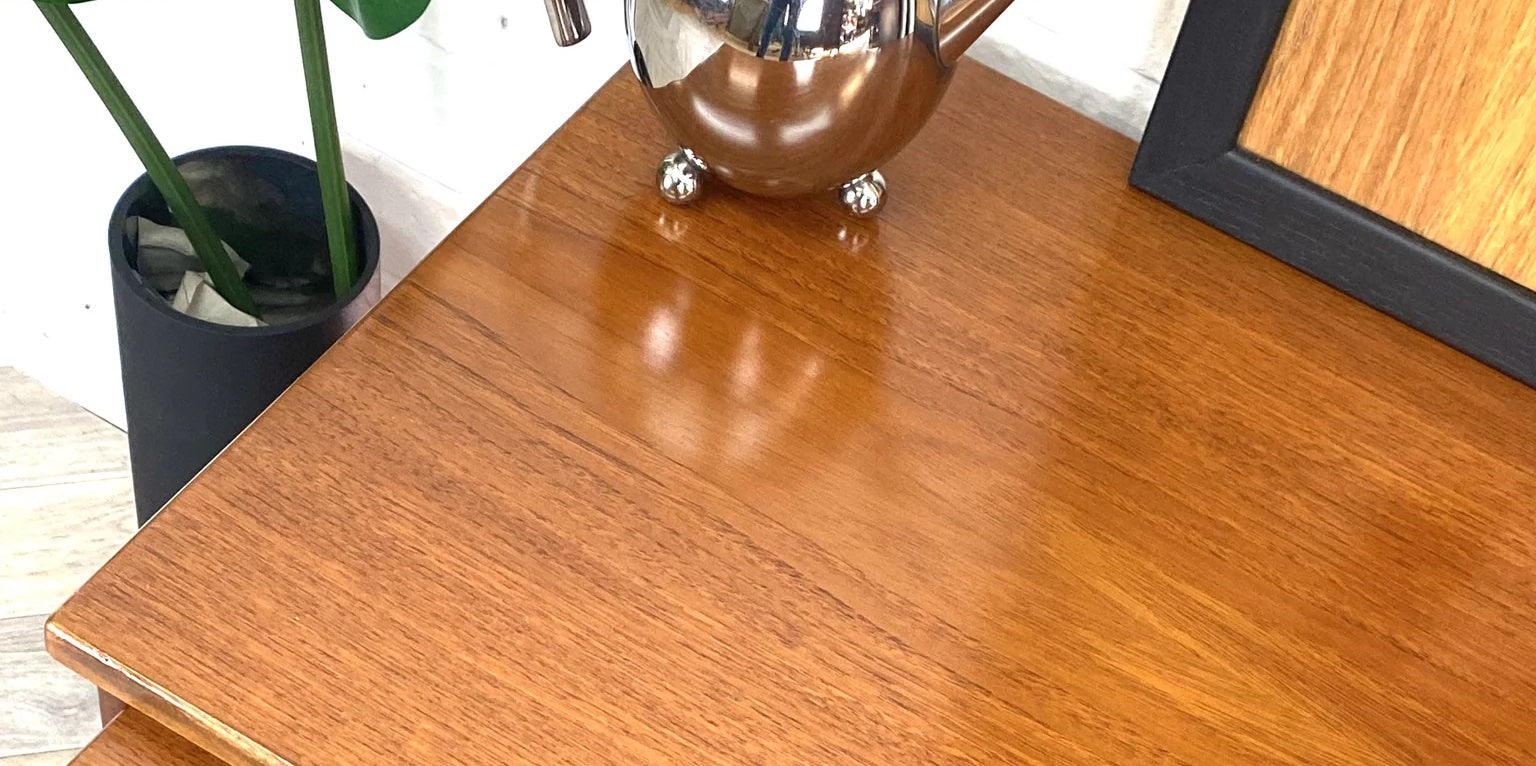Upcycling furniture always has its challenges. No two pieces of furniture are the same so you never know what type of job you’re getting yourself into when you bring home a fancy new item for a snap-up bargain. But that’s the excitement of it all, right?!
You may also think that restoring the wood will be a lot easier than painting it a totally new colour. With exposed wood being very on-trend at the moment, it’s a great look to go for.
I’m going to be straight with you, for those who have tried it and are struggling to get the right colour wood and may be thinking ‘why has my top coat sent my wood orange’ (or discoloured it in any way for that matter!) …
… my answer to you is that it hasn’t!
It’s not the top coat that has discoloured your furniture, or turned it orange, yet your item of wood or furniture was already orange in the first place.
What happens is that you’ll sand down your table top or piece of furniture and it comes up lighter. This is because of the dust that is sitting there. And you instantly think that you’ve achieved a ‘white-wash’ look or just achieved a lighter shade. This is the misconception. And when you go to apply your top coat you’ll notice it will go orange, or darker, or in fact back to its original shade.
This is the way to test it…
Get yourself:
- A cloth
- Water / mineral spirits (white spirits)
Damp your cloth with either the water tor mineral spirits and give it a wipe over.
(Tip: if you do it with the mineral spirits then you'll kill two birds with one stone by cleaning your piece at the same time.)
This will reveal the true colour of your wood and the colour that it will go with any clear top coat (for example Tough Coat, Varnish, Fusion Stain and Finishing Oil Natural)
I SHOW YOU HOW IT’S DONE IN THIS VIDEO
Once you’ve revealed the natural wood’s colour, then you can decide how you plan to restore this piece. And the only way to change the colour is to add some colour!
If you find that the wood is orange and you’d like to take it to a lighter tone, I would suggest using a coat of Stain and Finishing Oil in either:
- Driftwood - this is great for knocking back that orange tone (I use this quite a lot)
- or Ebony - which looks black in the pot (and can seem quite daunting at first!) but as you gradual apply it to the wood you will see it gives it grey-ish colour and looks beautiful when it sticks to the wood grain.
Another option is, you could apply a paint wash.
A paint wash is a mix of 50% water and 50% paint - a green toned paint colour would be great for minimising the orange look! If you’re not too sure what green paints to go for, I would suggest Upper Canada Green, Grandma Green, Botanical Charm or Bellwood.
Give it a go for yourself! Test it, by wiping it with a damp cloth so that you can see the true colour of the wood and it will give you an idea what colour it will go with its next coat!
P.s. I'll be at The Painter's Business Academy 2023, will you?

